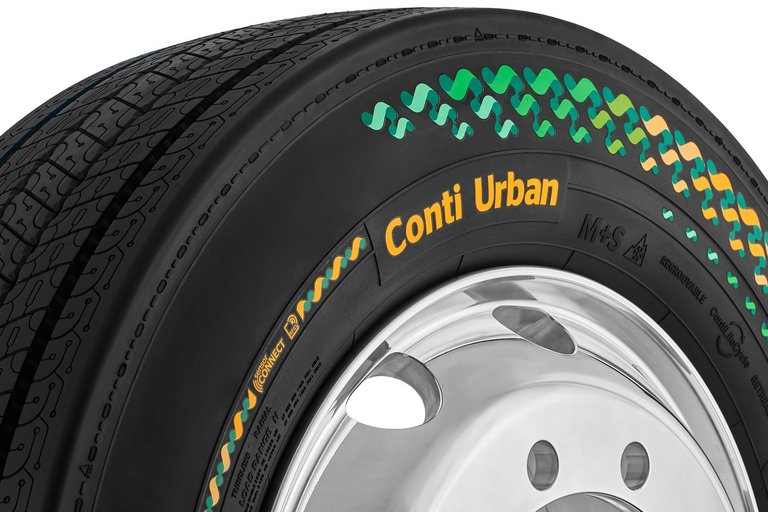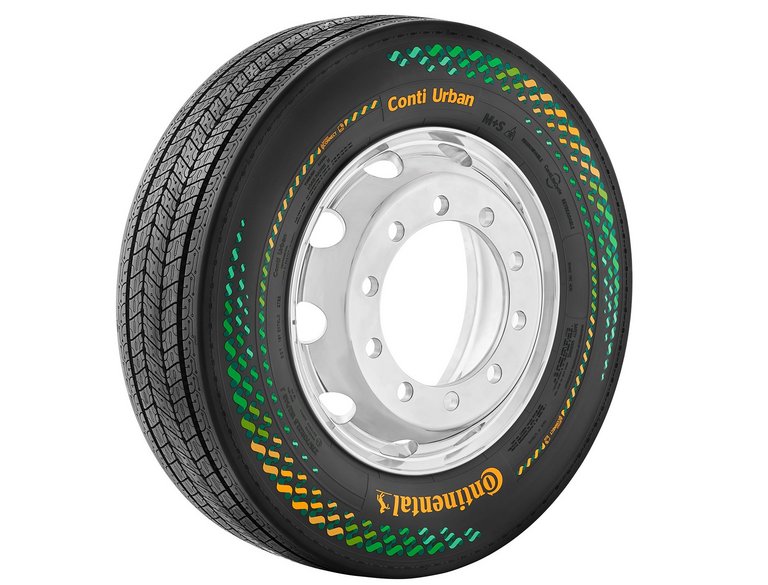Conti Urban Concept Tire Designed for Sustainable Public Transport
Continental’s sustainable concept tire Conti Urban, which is designed for electrified city buses and delivery vehicles in urban environments, has celebrated its world premiere at the IAA Transportation 2022. Already approved for road use, this concept tire contains around 50 percent renewable and recycled feedstock. All the materials used could potentially be deployed in series production in the near future. The tread of the Conti Urban, – the part of the tire that is in contact with the road – contains 68 percent renewable materials, including rapeseed oil, silica obtained from the ash of rice husks and responsibly sourced natural rubber originating from a joint development project by Continental and the German development aid agency ‘Deutsche Gesellschaft für internationale Zusammenarbeit’ (GIZ). Cutting-edge digital technology, local involvement in the cultivation of rubber and close collaboration with strong partners create transparency here and ensure a high level of traceability along the entire value chain for natural rubber. All natural rubber used in the tread originates from this project. In addition to recovered carbon black and recycled steel, Continental has also used Reclaim material to build the tire. This recycled rubber originates primarily from Continental’s innovative retreading and recycling plant for truck tires in Hanover, Germany.
Like the majority of Continental’s commercial vehicle tires, the Conti Urban can also be retreaded, a process that breathes new life into worn but intact tire casing by replacing the old tread with a new one. The continued use of the casing, which contains an especially high share of all the materials used in a tire, pays off: “Our Conti Urban increases its sustainability even more when its service life is extended. Once the tire is retreaded, so when the casing receives a brand-new tread, the share of renewable and recycled feedstock rises to more than 90 percent,” says Kreipe. “By 2050, we want to use 100 percent sustainably produced materials in all our tire products and achieve full climate-neutrality along our entire value chain.”
When designing the tire, Continental’s tire developers focused their efforts on achieving high energy efficiency and optimizing noise emissions. A special rubber compound in the tread, the wider tire tread and the specially optimized and exceptionally rigid profile help to reduce rolling resistance by 7 percent compared with a current-generation Conti Urban and increase tire life. As always with Continental, all without any compromise on the safety-relevant performance properties.
The noise behavior of the Conti Urban was also specially optimized. Noise frequencies generated while the tire is rolling over the road surface have been distributed over a wider range. As a result, the broader spectrum of different frequency ranges ensures that the perceived noise level is lower. The background to this is that sounds with a monotonous frequency are particularly unpleasant to the human ear. The generation of different frequencies at the same volume, on the other hand, helps to improve the individual's perception of noise. In this way, Continental wants to make a contribution to further reducing noise pollution from urban bus and delivery traffic in the future.




